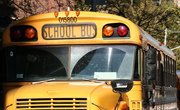A school assembly program is an opportunity to educate students by means of a performance, most frequently by visiting lecturers or performers, or a media event. The advantage of assemblies over field trips is organizational; it's much easier to have the event come to the students than to bring the students to the event. Permission for an assembly will have to come from a superintendent or principal, who may want to work with you to refine and further organize your idea.
Decide on a specific topic with a single theme for your school assembly, and approach your school principal regarding your idea, and the date on which you'd like to put on the assembly. You'll need to obtain permission from the principal, so the more focused and organized your plan is, the better.
Regarding choosing a date, it's important to coordinate with other instructors to make sure that your proposed assembly date doesn't interfere with other school events.
Hire a performer or lecturer with expertise related to your concept. The idea here is to flesh out your concept with an individual, or group of individuals, who can bring the information you're trying to impart to life. This is an opportunity to engage students, intellectually and creatively, in an alternate venue to the traditional classroom model.
There are a number of reputable agencies with extensive databases of lecturers and performers. These agencies also frequently act as a middleman in the hiring process. Popular agencies through which to find and hire a reputable lecturer or performer include Gig Masters and the Bureau of Lectures & Concert Artists.
Determine the structure of the assembly by deciding on the length of the event, seating arrangement, any equipment needed — such as a sound system or lighting — and the order of the events and presentations that will take place.
Create a guest list of students, teachers and administrators who would benefit from attending your assembly, and invite them personally, or invite them by leaving invitations in their school mailbox.
Make sure the students, teachers and administrators are seated according to seating arrangement, and distribute assembly programs to those in attendance.
Deliver the welcome speech to the crowd. The welcome speech should involve not only thanking the guests for attending, but should also include a brief, informative overview of the purpose of the program, and the activities and demonstrations that will be taking place.
Follow up the assembly by thanking the attendees for coming, and acknowledge any teachers, administrators, performers, lecturers, technical support staff and program designers who helped put the assembly together.
Related Articles
References
Writer Bio
Juan Ramirez has been a writer for over 14 years and worked for two years as an assistant editor with an internationally circulated journal. Ramirez holds a Bachelor of Arts in English writing from Potsdam State University and a Master of Arts in individualized study from New York University.











